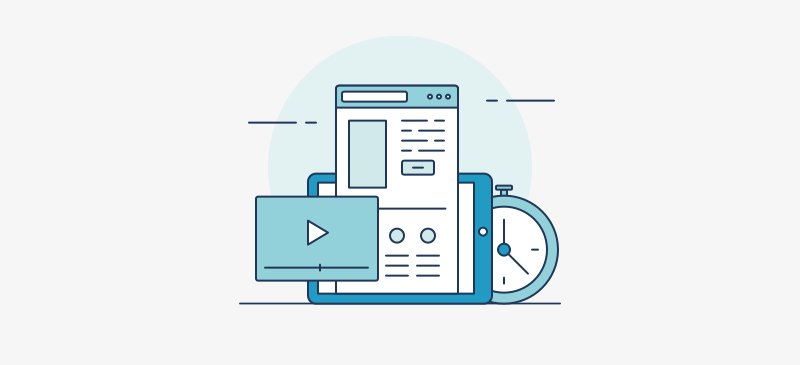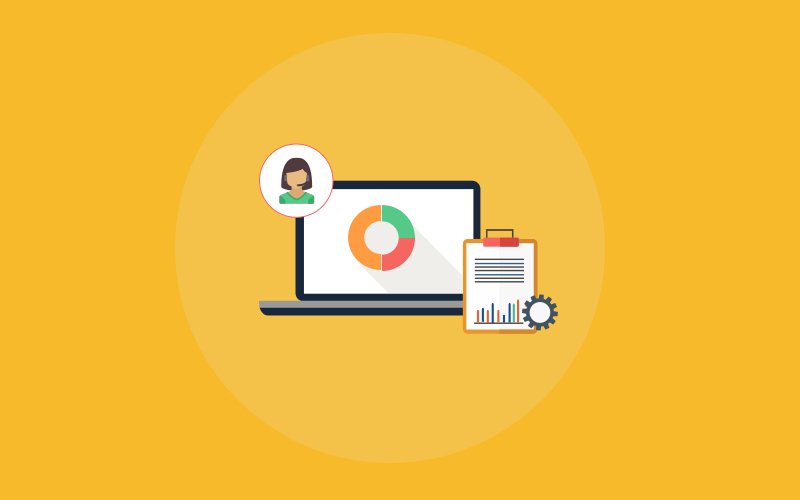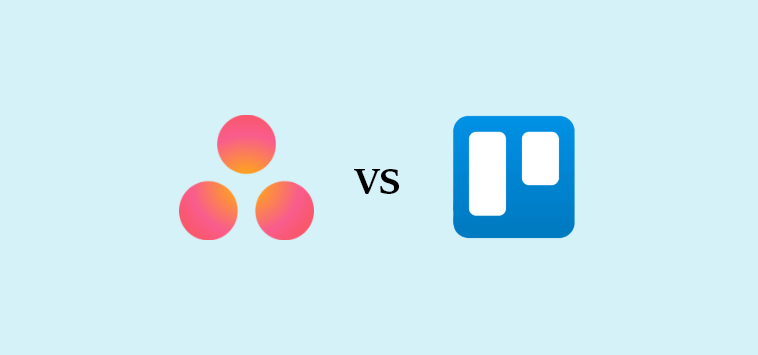According to Zion Market Research, the global cloud storage market is expected to reach $235.4 billion by 2028, with a CAGR of 21.2% from 2021 to 2028.
This shows how cloud-based services and applications are in demand today, and it won’t stop anytime soon. Businesses realize that paying a software vendor and subscribing to their services is much better than hosting the hassle of an on-site infrastructure.
Luckily, for project managers, enough cloud-based project management software options are available.
And in this blog, I compared the 10 best software solutions you should consider if you’re looking to invest in the coming few months.
Before we get to the details, have a look at the names –
| Cloud-Based Project Management Software | Best For | Pricing Starts From |
| ProProfs Project | Planning, Collaborating & Delivering Projects on Time | Forever Free for small teams.Paid starts at $39.97/month/unlimited users |
| Basecamp | Remote Work Collaboration | $15/user/month |
| Celoxis | Enterprise Portfolio Management | $25/user/month |
| Smartsheet | Real-Time Project Collaboration | $9/member/month |
| Wrike | Automating Administrative Workflows | $10/user/month |
| Asana | Strategic Project Planning | $10.99/user/month |
| ClickUp | Generating Detailed Reports | $7/user/month |
| monday.com | Managing Project Resources | $27/month/3 seats |
| Trello | Workflow Automation | $5/user/month |
| Zoho Projects | Task Automation | $4/user/month |
Looking for the Top 3 Picks From the List?
If you’re short on time, you can quickly review my top three picks. This will give you an entry-level understanding of the tools.
1. ProProfs Project: ProProfs gives startups and small-to-medium-sized businesses (SMBs) a powerful all-in-one dashboard with 360° visibility of tasks, projects, and deadlines. It offers advanced features like resource planning and time tracking, even in the free plan, making it a cost-effective solution.
2. Celoxis: The platform manages complex enterprise portfolios with combined project tracking, resource oversight, and insightful reporting. It provides robust analytics for maintaining control over large-scale projects.
3. Basecamp: This software centralizes communication and tasks for remote teams. It features file sharing, real-time messaging, and automatic check-ins. Its “Hill Charts” provide a clear visual overview of project progress.For a detailed review of these tools, check my full comparison below.
List of the 10 Best Cloud-Based Project Management Software
The cloud-based project management software list below should help you understand what options are available and why they’re worth it.
I connected with industry experts (project managers, team leaders, HR managers, etc.) working in startups and SMBs across market niches to identify the best tools in the industry.
And to help you make an informed decision, I included all the details you need—pricing, pros, cons, features, etc. Without further adieu, let’s get started.
1. ProProfs Project – Best for Planning, Collaborating & Delivering Projects on Time
What Is Project Management? How to Manage Projects Online With ProProfs Project
So, what makes ProProfs Project one of the best cloud-based project management software for startups and SMBs? Let’s start with the all-inclusive dashboard.
It helps you gain 360° visibility of all tasks, projects, and deadlines. No more switching between tabs to find the information you need. Whether you prefer a list view, calendar, Gantt charts, or Kanban boards – everything is accessible right there.
Something that might surprise you is that the software, despite targeting SMBs, comes with advanced project management features—resource planning, portfolio management, billing and invoicing, time tracking, and more.
And these are available even in the free plan! This alone makes it a killer deal, in my opinion.
What You’ll Like:
- Customizable expert-designed templates to kickstart new projects
- In-app discussion, file sharing, task comments, @mentions, etc., for team collaboration
- Time-tracking functionality to analyze time spent on various tasks and projects
- Reporting tool for insights into project summary, profitability, timeline, etc.
- Integrates with ProProfs suite of tools and third-party software using API
What You May Not Like:
- Dark user interface option is not available
- No dedicated account manager for the free plan, unlike paid
Pricing:
Forever Free for small teams. Paid options start from $39.97/month.
2. Basecamp – Best for Remote Work Collaboration
(Image source: Basecamp)
Basecamp is a reliable tool for teams working remotely. It brings together all your project’s communication and tasks in one place.
First impressions: I think if you have a remote team, you should try this out.
With Basecamp, collaboration becomes easy. You can share files, assign tasks, and communicate with them in real time – thanks to its built-in messaging system, as well as discussion boards and group chats.
For project managers, automatic check-ins ensure your team stays engaged and updates regularly. And if you’re someone who prefers visual progress tracking, you’ll appreciate the “Hill Charts” feature. It provides a clear visual representation of project progress.
What You’ll Like:
- To-do lists with deadlines and assignees keep projects on track
- Separate spaces for teams and projects to prevent information overload
- ‘Campfires’ facilitate team bonding and casual conversations
- Reports provide insights into project timelines, budgets, and team performance
- Client access enables external collaboration on projects with limited visibility
What You May Not Like:
- Some users feel that the project tracking capabilities are limited compared to other tools
- Starting plan may not be the best option for growing businesses
Pricing:
Starts at $15/user/month.
3. Celoxis – Best for Enterprise Portfolio Management
(Image source: Celoxis)
Celoxis provides a comprehensive solution for managing enterprise portfolios. It combines project tracking, resource oversight, and portfolio reporting.
In my experience, the portfolio view offers insights into multiple projects, supporting data-driven decisions for executives. You can assign tasks, monitor progress, and oversee budgets effectively to maintain control over complex projects.
Apart from that, the software also offers robust reporting and analytics capabilities. You can generate detailed reports on project progress, budget, resources, and more.
What You’ll Like:
- Planning tools to create dynamic and adaptable project plans
- Project accounting for a clear view of financial performance
- Resource management for optimal allocation of your workforce
- Team and client collaboration through integrated communication tools
- Time and expense tracking to capture project costs and effort
What You May Not Like:
- No timesheets or billing-invoicing in the basic plan
- Some users report customizing workflows can have a steep learning curve
Pricing:
Starts at $25/user/month.
4. Smartsheet – Best for Real-Time Project Collaboration
(Image source: Smartsheet)
As someone who had just given up on the spreadsheet life, I was skeptical about Smartsheet.
But is it just another project management software cloud-based with a spreadsheet-like interface? Let’s find out.
In my usage, I found it shows real-time updates that keep teams synchronized. You’ll appreciate its range of project views, from grid and Gantt charts to card views. With automated workflows, you can easily manage task dependencies and send reminders.
In my experience, its collaborative tools ensure everyone remains informed. This makes it a go-to choice if you want to prioritize seamless coordination, especially in dynamic and remote work settings.
What You’ll Like:
- Resource management to allocate and track resources across projects
- Customizable dashboards and reports for insights into project performance
- ‘Control Center’ for centralized management of project portfolios
- ‘Bridge’ connects workflows and systems to automate tasks and data transfer
- ‘WorkApps’ to build no-code applications for specific business needs
What You May Not Like:
- No team workload tracking or timeline view in the basic plan
- Some users have found issues with linking and managing dependencies between multiple sheets
Pricing:
Starts at $9/member/month.
5. Wrike – Best for Automating Administrative Workflows
(Image source: Wrike)
Wrike’s dashboard has a unique three-pane view that keeps everything within reach. It offers forms and requests to create and fulfill tasks, a nifty feature for assigning accountability to team members.
You can create customized forms to gather information from stakeholders, which can then be automatically converted into tasks or projects within the platform. That’s convenient.
I also like the automation capabilities. You can create custom workflows that automatically assign tasks, send notifications, update project statuses, and more. This frees up your team’s time to focus on more strategic work.
What You’ll Like:
- Customizable workflows to automate processes and approvals
- Gantt charts visualize project schedules and track progress in real time
- Kanban boards for a visual overview of tasks and their status
- Shared workspaces and in-task discussions facilitate teamwork
- Integrations with Salesforce and Adobe Creative Cloud to enhance functionality
What You May Not Like:
- Only 2 GB storage space per account in the free plan
- Some users wish the reporting tool offered better filtering and customization
Pricing:
A free plan is available with limited storage space. Paid options start from $10/user/month.
6. Asana – Best for Strategic Project Planning
(Image source: Asana Academy)
Asana is a great cloud-based project management software. I was intrigued by its project planning capabilities, something I read about on multiple software review sites.
The software is ideal for strategic project planning due to its detailed task management and goal-setting tools. It lets you assign tasks to team members, set deadlines, and create subtasks to break projects into smaller segments.
Asana also offers powerful project tracking and progress visualization features. I found it easy to visualize task status, monitor project milestones, and view project timelines.
However, the free plan restricts several features, such as cutting down access to project dashboards, custom templates, etc. This can be somewhat limiting if you’re eyeing the free plan.
What You’ll Like:
- Lists, boards, calendars, and timelines for various work styles and project needs
- Workload management for a clear overview of team capacity
- Custom fields to track important information specific to projects and tasks
- Portfolios offer a high-level view of the health and status of multiple projects
- Forms simplify gathering information and requests from stakeholders
What You May Not Like:
- Document organization and file management are not as strong as some users would like
- No AI capabilities in the free plan
Pricing:
A free plan is available for up to 10 teammates. Paid options start from $10.99/user/month.
7. ClickUp – Best for Generating Detailed Reports
(Image source: ClickUp)
ClickUp offers extensive reporting features that provide actionable insights into project performance. But that’s not the only feature of the platform.
I liked the customizable dashboards that summarize progress, time tracked, and task statuses at a glance. You can choose from various report types, including burn-down charts, velocity charts, and cumulative flow diagrams, to visualize project data and identify trends.
The software also offers a feature called ‘Goals,’ which lets you set project targets and track progress. This can be a powerful way to keep your team focused and motivated.
What You’ll Like:
- Customizable task statuses for adapting workflows to project needs
- Time-tracking capabilities for accurate monitoring of time spent
- Custom fields for adding project-specific information to tasks
- ‘Mind Maps’ to visualize ideas, brainstorm solutions and plan projects
- ‘Docs’ feature for a collaborative space for creating and sharing project documentation
What You May Not Like:
- Only 100 MB of storage in the free plan
- Several users report that switching between multiple views can sometimes feel slow
Pricing:
A free plan with limited file storage space is available. Paid options start from $7/user/month.
8. monday.com – Best for Managing Project Resources
(Image source: monday.com)
monday.com is a great option for cloud-based project management. My initial impressions are centered around the resource management feature.
It allowed me to track project resources, including people, equipment, and budget. I could spectate who was working on what task and quickly reassign tasks if needed. This helped avoid overallocation.
Collaboration was also seamless. You can create shared boards and tasks, leave comments and feedback, and track project progress in real-time.
There is a free plan. You can use it if you’re okay with some feature sacrifices, such as missing automation, time-tracking, timeline views, etc.
What You’ll Like:
- Workload views for a clear picture of team capacity
- Customizable dashboards display key project metrics and progress
- Time tracking tool to monitor time spent for accurate reporting
- Customizable forms simplify gathering information and requests
- Pre-built templates for various project types
What You May Not Like:
- Paid plans require purchasing for at least 3 users
- Calendar, timeline, and Gantt charts are only available in higher tiers
Pricing:
A free plan is available for up to 2 seats. Paid options start from $27/month/3 seats (at $9/seat).
9. Trello – Best for Workflow Automation
(Image source: Trello)
Trello supports workflow automation with its Kanban-style boards and customizable cards, which make task organization simple and visual.
You can create boards for different projects and add lists representing various workflow stages. These cards represent individual tasks, and you can easily move them across lists as they progress.
The software’s built-in automation tool, ‘Butler,’ manages repetitive tasks like due date changes and card assignments. In my usage, this feature frees up time for more strategic work.
What You’ll Like:
- Boards, lists, and cards for a visual system to organize tasks
- ‘Power-Ups’ extends functionality with third-party integration
- Checklists break down tasks into smaller steps to track progress within a card
- Card aging feature highlights inactive cards to keep focus on current tasks
- Voting to weigh in on priorities and make decisions collaboratively
What You May Not Like:
- Project views like timelines, maps, calendars, tables, etc. only available in higher tiers
- May not be the best option if you’re not a fan of the card-style UI
Pricing:
A free plan is available for up to 10 boards per workspace. Paid options start from $5/user/month.
10. Zoho Projects – Best for Task Automation
(Image source: Zoho Cares)
Looking for a project management cloud-based software that excels at task automation? Zoho Projects might be a tool you should consider trying.
The first thing software I liked is that the tool lets you create custom workflows that automate various tasks, such as assigning tasks to team members, updating task statuses, and sending notifications.
Next, you’ll like the reporting capabilities and charts. They’re excellent for visualizing project progress and getting deep insights into how work is progressing.
Gantt charts can be used to create dependencies between related tasks, easily reschedule them, and track progress closely.
What You’ll Like:
- Customizable workflows that suit various project types and team processes
- Time tracking capabilities for overseeing time spent on different tasks
- Budget management is supported, along with automated expense tracking
- Forums and chats for team communication
- Integrations with other Zoho apps to enhance functionality and boost workflows
What You May Not Like:
- No project templates or time tracking in the free plan
- Some users feel that there could be better version control features
Pricing:
A free plan is available for up to 3 projects. Paid options start from $4/user/month.
Evaluation Criteria
To give you the most accurate and helpful recommendations, I didn’t just pull these tools out of a hat! I used a systematic approach to evaluate each one, considering several key factors:
- User Reviews and Ratings: I explored what real users are saying, exploring reviews and ratings on trusted platforms. This should help you understand what existing users feel about these platforms.
- Essential Features and Functionality: I examined each tool’s core features, focusing on how they work and what benefits they provide. This helps you understand the practical value each tool brings to the table.
- Ease of Use: Nobody wants to wrestle with complicated software. I considered how user-friendly each tool is, paying attention to things like design, interface, and navigation.
- Customer Support: Good customer support can be a lifesaver. I looked at each company’s quality and responsiveness in offering support, considering how well they assist users with setup, troubleshooting, and ongoing use.
- Value for Money: Budget matters. I assessed the overall value each tool offers compared to its price to help you determine if it’s a worthwhile investment.
- Personal Experience and Expert Opinion: I’ve used my own insights and experiences, as well as the opinions of other industry experts. This adds credibility and practical relevance.
Cloud-Based Project Management Software Buyers’ Guide
Now that you know about your options, it’s time to do some background research. Well, technically, I did all the research for you. You just need to have a quick look and see if there’s something you are looking for.
This detailed approach ensures you don’t need to spend more hours exploring other blogs. Let’s get started.
What Is Cloud-Based Project Management Software?
It is just another project management software that lives on the Internet, not your computer. Unlike traditional software, it lets you access from anywhere with a secure login.
This means you can access projects, tasks, and team communications from anywhere, anytime, using any device with an Internet connection. It eliminates the need to install and maintain software locally.
Like any other project management software, these platforms also come with features like Gantt charts, task assignments, document sharing, automated notifications, etc.
What Are the Benefits of Using Cloud-Based Project Management Software?
Project management cloud-based software offers compelling benefits for teams of all sizes and across various industries.
Here’s how it can impact your business –
- No more email overload: Say goodbye to endless email chains and lost attachments. With a centralized platform, project-related communication stays in one place.
- On-track & on time: Cloud-based tools provide a clear visual overview of all projects, deadlines, and progress. This means fewer missed deadlines and less stress.
- Work from anywhere, anytime: Access projects and collaborate with your team from any device with an internet connection.
- Boost team collaboration: You or your team don’t need to be in the workspace to share files, provide feedback, and have real-time discussions.
- Make informed decisions: Generate detailed reports and analyze data to track progress, identify risks, and make adjustments.
- Scale your business easily: Cloud-based solutions are easily scalable. Add users and projects as needed without the hassle of managing new infrastructure.
- Keep your data safe & secure: Cloud-based providers invest heavily in security measures and data backups.
For example, ProProfs Project is GDPR and CCPA-compliant. It means they adhere to strict data privacy regulations.
You should also check whether the software you choose has a well-maintained security infrastructure, including measures like data encryption, access controls, and regular security audits. This ensures that your valuable project data is protected from data breaches.
Which Is the Best Cloud-Based Project Management Software?
So, now that we have come to the business end of the blog, here’s the question of the hour – What is the best cloud-based project management software?
Well, that is a tricky question, I must say. It’s hard to pick one tool from the list and crown it the number one.
The tools discussed here cater to different needs, from remote teamwork to detailed reporting. Each option offers distinct strengths, so it’s all about matching a tool to your requirements. Evaluate based on features, ease of use, scalability, and support to make an informed decision.
And for that, I strongly recommend you test the free plans and trials the software vendors offer. That’s the best way to know how any platform helps you get your job done, minus the stress.
You must have already read about ProProfs Project’s free plan. If you’re eager to try how it helps you manage day-to-day project workflows, just sign up and get started.
FREE. All Features. FOREVER!
Try our Forever FREE account with all premium features!





